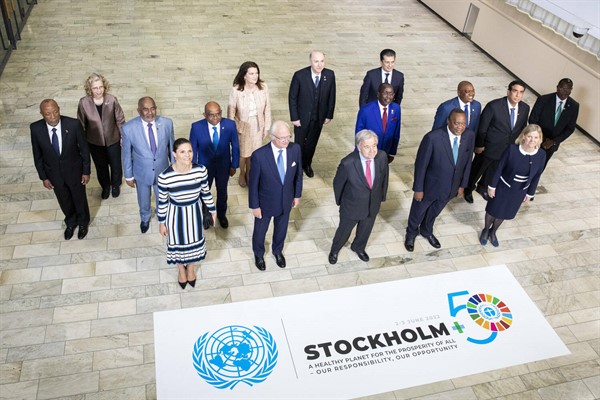Last week, the United Nations held the Stockholm+50 conference, a two-day international meeting celebrating 50 years of global action on climate change. The first iteration of this event in 1972—the United Nations Conference on the Human Environment, which also took place in Stockholm, Sweden—saw countries come together to acknowledge their responsibility to “defend and improve the human environment for present and future generations,” and led to the creation of the U.N. Environment Program, which is still active today. Five decades after that first meeting, Stockholm+50 was intended as an opportunity to reflect on the progress that has been made, and to “springboard” further action toward accomplishing the U.N.’s 17 Sustainable Development Goals by their 2030 deadline.
This was a climate-focused conference held in the hometown of Greta Thunberg, one of the world’s most renowned climate activists. One would think that both the theme and proximity of Stockholm+50 would have placed the conference at the top of Greta’s agenda—but she actually decided not to attend. Instead, she and hundreds of other activists brought together by the Fridays for Future campaign used June 3 to march through the streets of Stockholm, protesting inaction on climate change.
What does this tell us, then, about international meetings—or at least about public perceptions of international meetings—like Stockholm+50?

